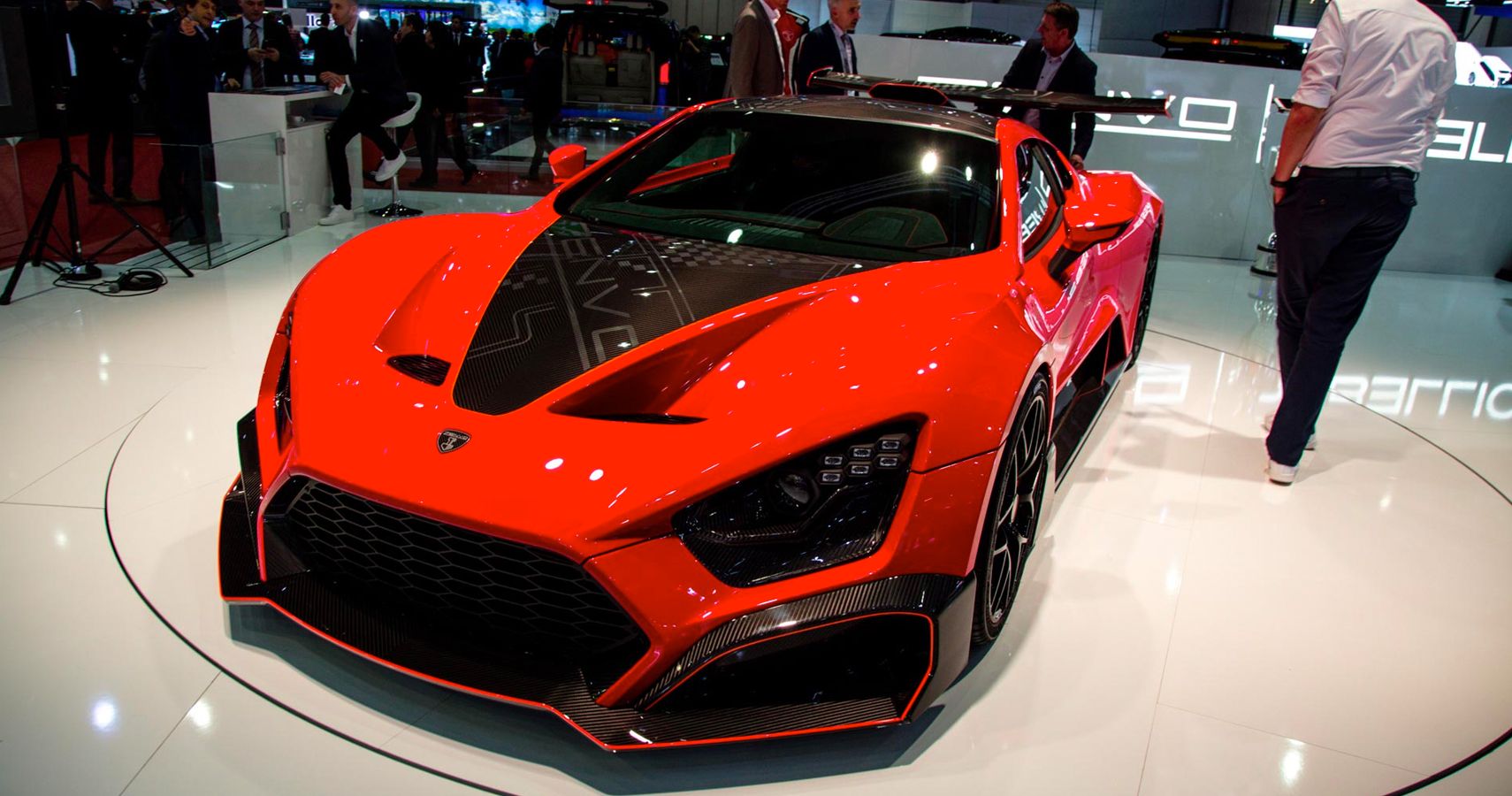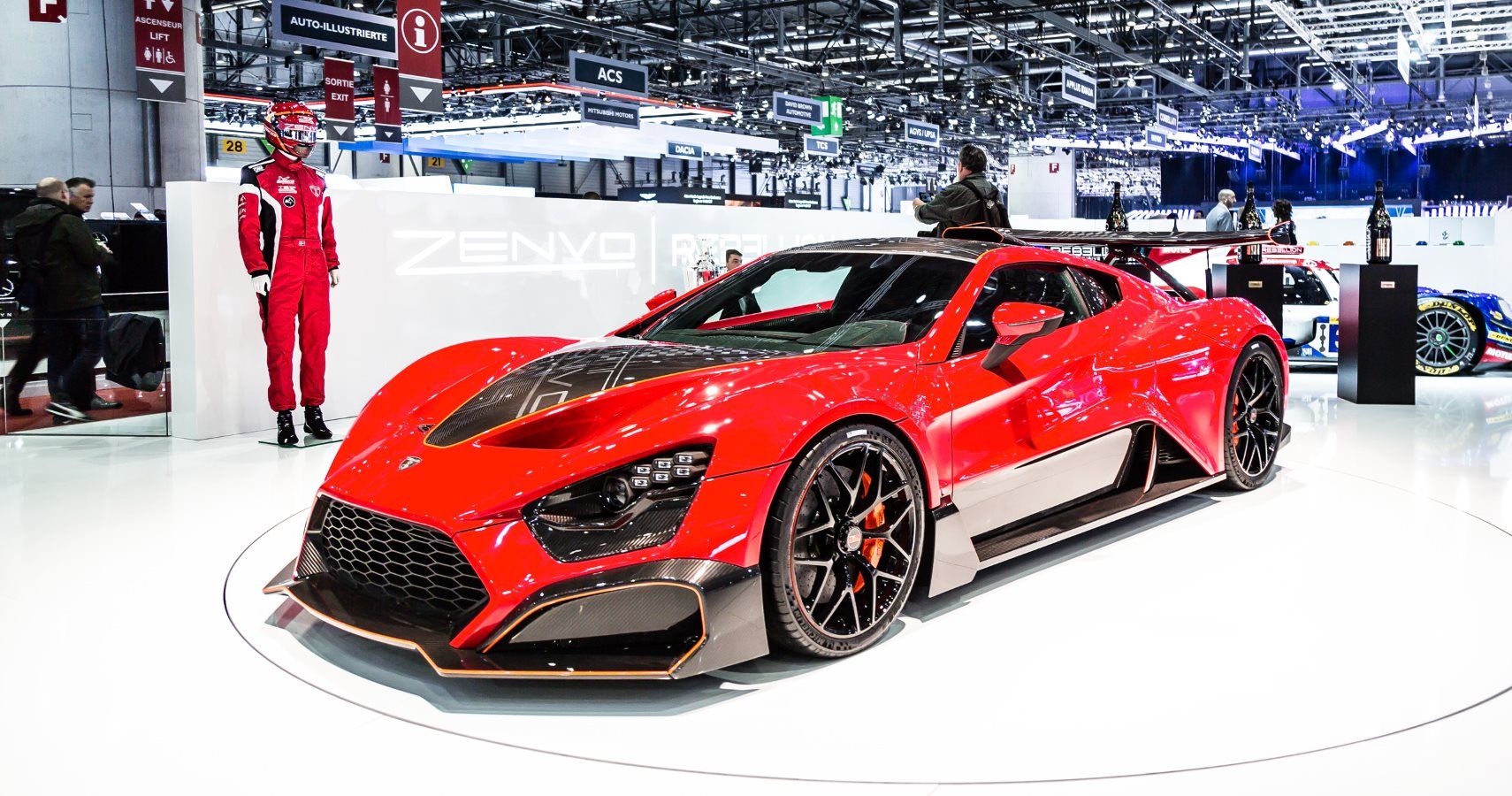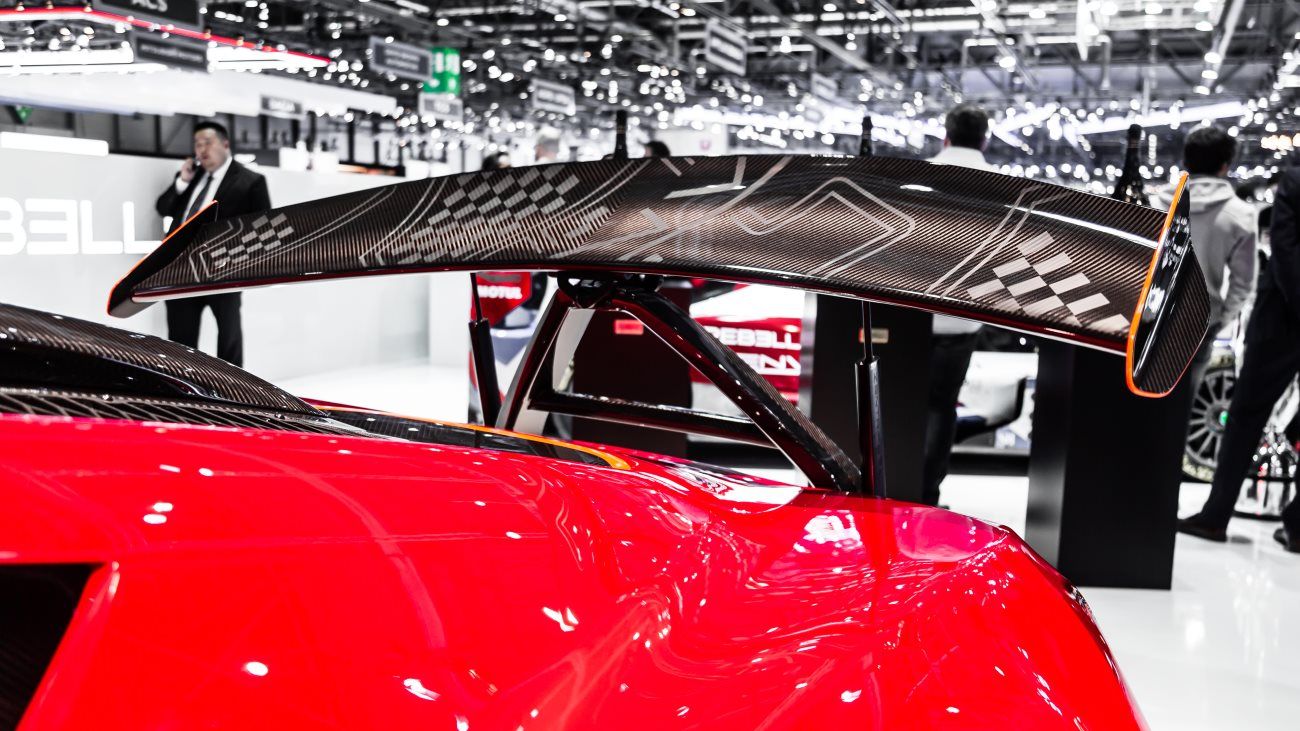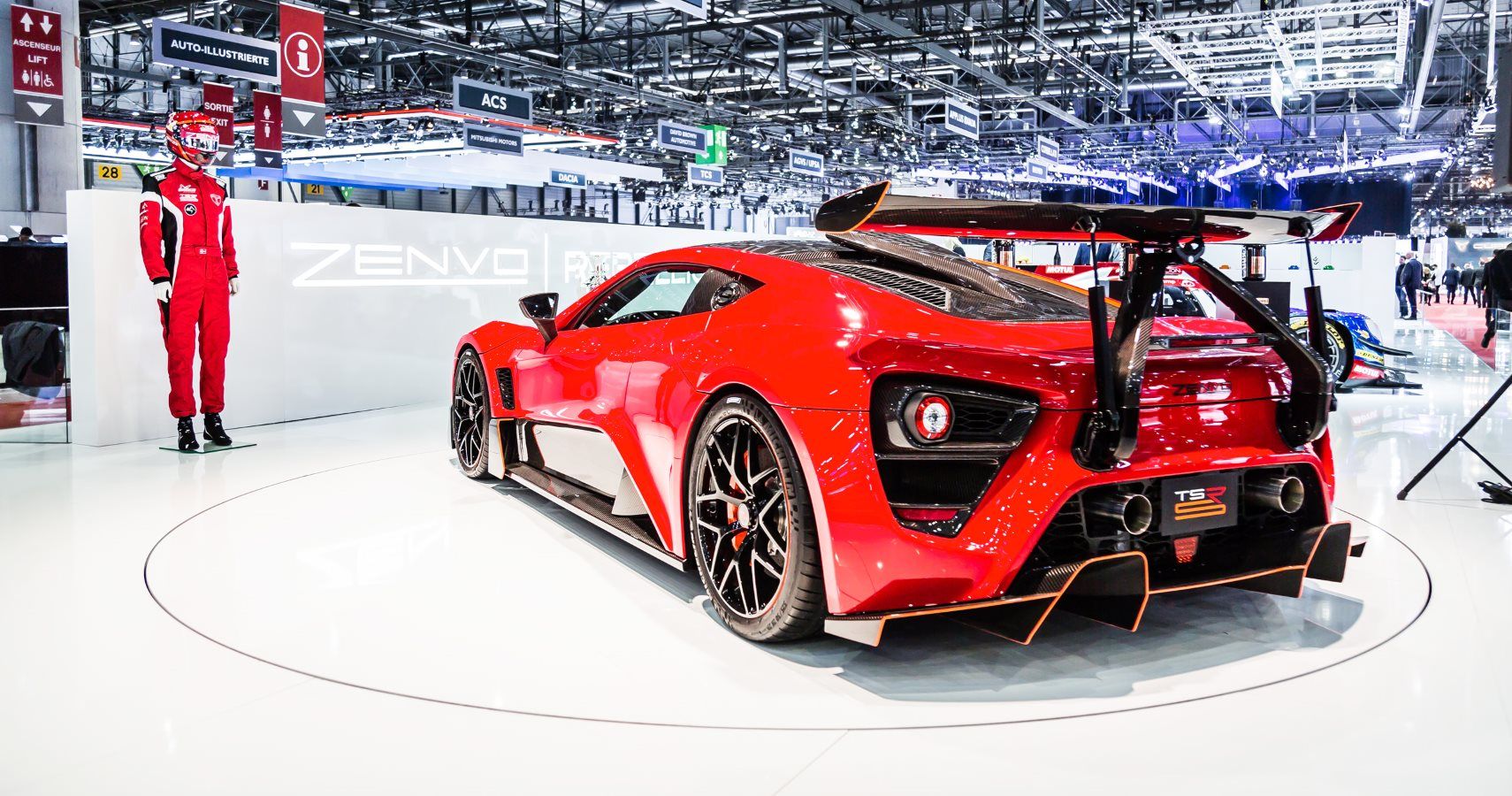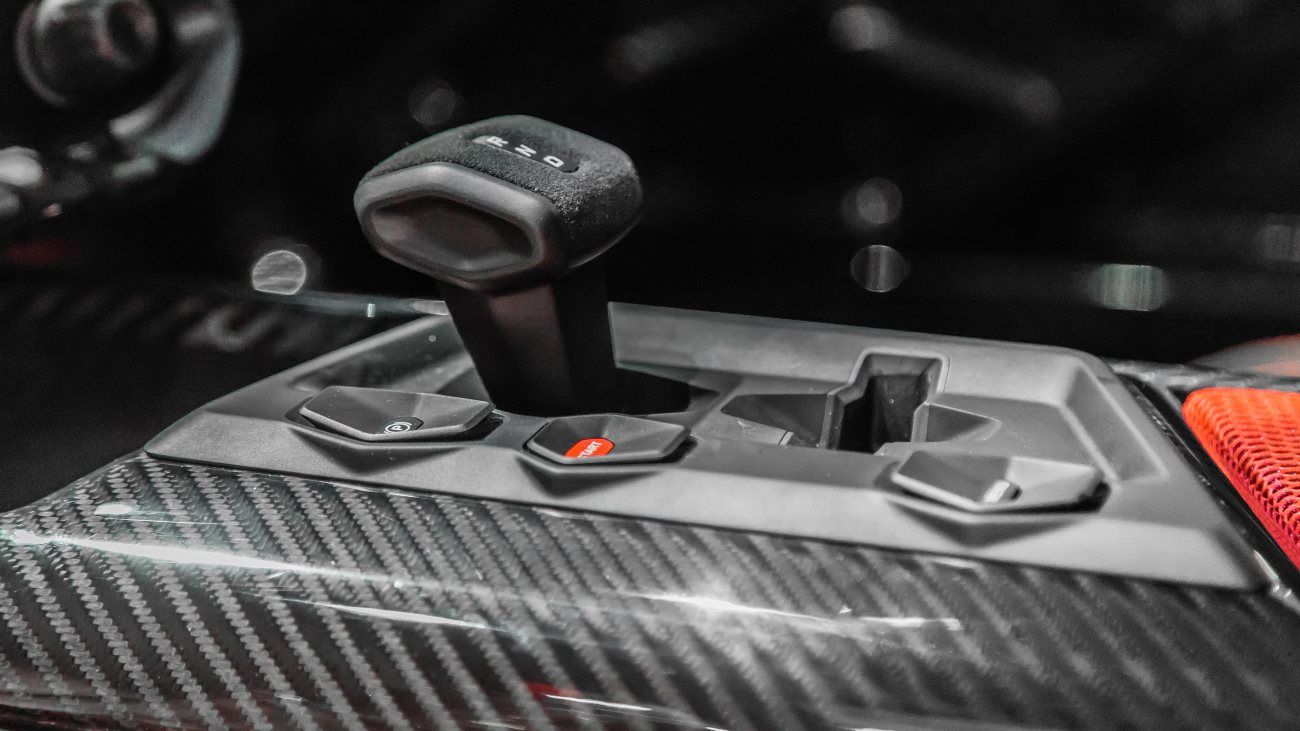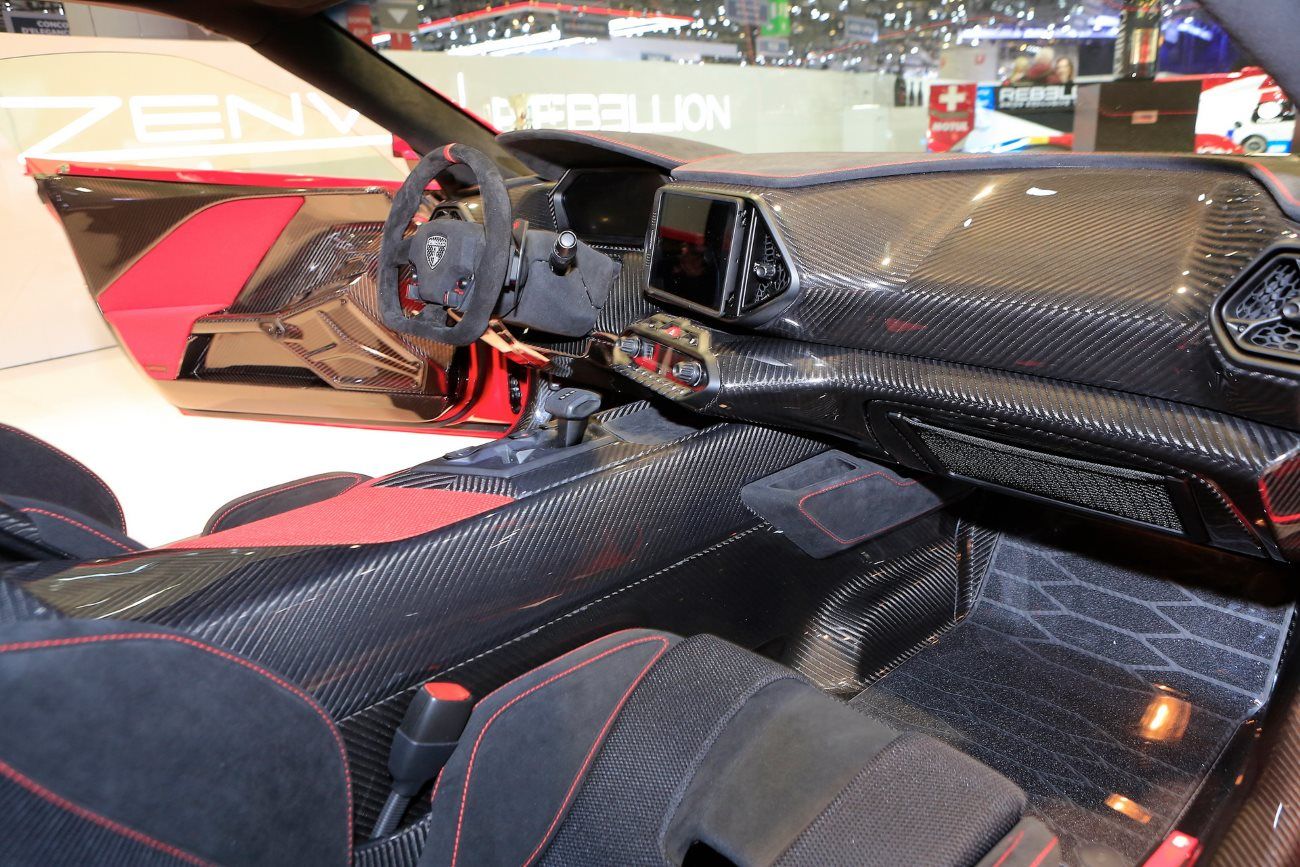The Zenvo TSR-S is an interesting car that features an adjustable wing— but it packs more than just that.
Back in the late 1960s, the United States Air Force began experimenting with something called variable geometry wings. What they found was that you could change the shape of a jet fighter’s wings to give it different flight characteristics— swept back for speed, and pulled forward for stability. This allowed a single plane to have the speed necessary to intercept Russian bombers while later being able to change its wings to have the stability to perform ground-attack runs.
The technology would eventually find its way into the F-14 Tomcat, one of the largest and most famous fighter/bombers ever built.
Flash forward to today and variable geometry wings have largely fallen out of favor. At least, in the military world. In cars, though, that’s a totally different story.
This is the TSR-S, made by Dutch hypercar maker Zenvo. It’s an evolution of the company’s previous offerings, the TS1 GT, as well as the TSR track-only racer. “S”, in this case, stands for “street legal.” The company is relatively new— they began making small-scale production runs of their 1,000+ hp hypercars since 2009.
And while the TSR-S’s performance numbers are as impressive as Zenvo’s older models, it’s not the engine that really draws the eye. It’s the giant, tilting wing that sits on the TSR-S’s backside.
Top Speed: 202 mph
Horsepower: 1,177 hp
Braking Distance (60 mph-0): Unknown (not yet officially tested)
0-60 mph: 2.7 seconds
Quarter Mile: Unknown (not yet officially tested)
Zenvo calls it the “Centripetal Wing”, and just like the Tomcat, it can change shape depending on what the car is doing. If the car is braking, the entire wing tilts up to act as an air brake. If the car is turning, the wing will tilt in the opposite direction to increase the downforce applied to the inner set of tires. This allows the TSR-S to grip corners unlike any other car in existence.
And before you ask— yes, there are a set of manual controls so you can waggle the wing while parked. No other car allows the driver to wave "hello."
Like the body, the wing is made completely out of carbon fiber. The chassis, on the other hand, is a steel/aluminum semi-monocoque with a steel subframe. This makes the car slightly heavier than its all-carbon all-the-time competition, but don’t worry. There’s still plenty of carbon to be found on this beast.
Beneath the carbon fiber hood is Zenvo’s in-house designed 5.8-L twin-supercharged V8. Horsepower is measured at 1,177 stampeding ponies. This puts the TSR-S at the same level as one-off hypercars from the likes of Porsche, Mercedes, and McLaren, while also rubbing elbows with Bugattis and Koenigseggs.
Zero to 60 mph is done in just 2.7 seconds. Zero to 124 mph is done in 6.8 seconds. Top speed is electronically limited to 202 mph.
Why limited? Zenvo doesn’t want to break any of the delicate gizmos that keep its wing tilting. Besides, the TSR-S isn’t about straight line performance—it’s about using innovative technology to achieve ever faster lap times.
But the TSR-S is also a street-legal car, and thus it comes with some road-going modifications. The engine’s power output can be dialed back using a control on the steering wheel. There are three outputs to choose from: min, which puts out a mere 700 hp, IQ, and max, which unleashes all 1,177 hp.
On IQ, the TSR-S’s sophisticated traction control determines just how much power the car can actually utilize based on its current situation and lets the engine work only as hard as the tires can still maintain grip. It’s an interesting solution to a car that has more power than you could ever realistically need.
RELATED: MCLAREN IS PLANING A SUPERCAR THAT'S EVEN FASTER THAN THE 600LT
There’s also a setting for the transmission that switches between a regular, road-going single-clutch and a "brutal mechanical direct power-shift race setup that delivers a genuine race car experience on the track."
Michelin Pilot Sport Cup 2 tires can be used either on the street or on the track, and a set of carbon ceramic brakes slow the TSR-S down even better than its tilting wing can.
Although the TSR-S can be driven on roads its true home is the race track, and it shows in the car’s interior. "Spartan" is one way to describe it, with bare carbon adorning almost every surface. Alcantara is present, but it’s only used on specific locations to prevent glare. There’s a large LCD behind the wheel for the instrument cluster and another screen in the center console to provide additional data about the car.
RELATED: ZENVO TSR-S - CHECK OUT THE 1,200 HP SUPERCAR
There’s no air conditioning, navigation, sound system, or airbags. There isn’t even a trunk, and driver assistance software outside of traction control is non-existent. There are options to add some of these comforts back to the car, but the TSR-S is not built for creature comforts.
It’s also a car that will have very few examples made. Zenvo is producing the car at a rate of 5 per year at their factory in Denmark which is a rate that’s even slower than most hypercar makers.
Price hasn’t been announced, but the TSR was around $1 million, so the TSR-S is expected to exceed $2 million.
Is it worth it? It’s hard to say. The TSR-S still hasn’t posted much in terms of performance numbers, so it’s difficult to determine how it stacks up to its competition outside of acceleration numbers (which are phenomenal even by hypercar standards). Until we see it post some track times we can only speculate on what that wing will do for the TSR-S’s lap times.
But the Tomcat served in the US Navy for 30 years. That might be an indication of what a fancy wing can do for you.
NEXT: RUMOR - LAMBORGHINI HYBRID HYPERCAR PRIVATELY REVEALED

